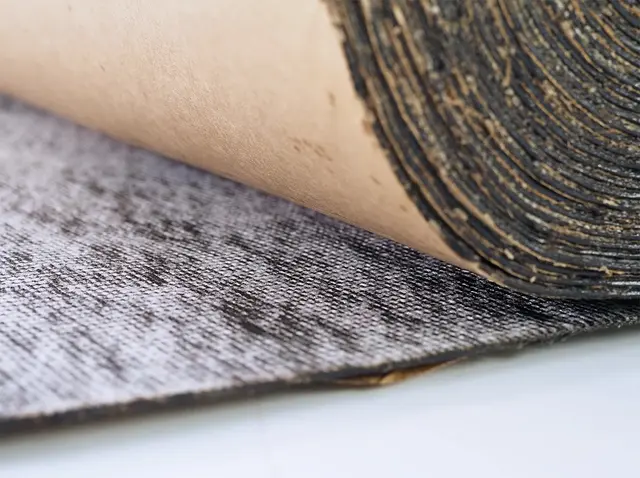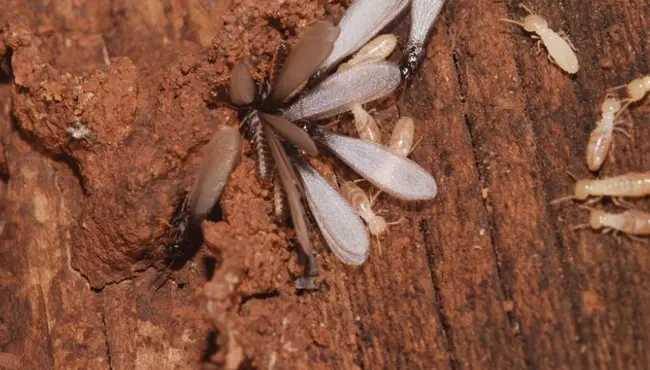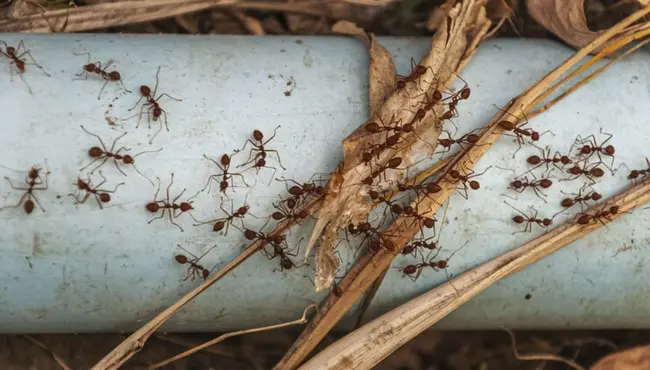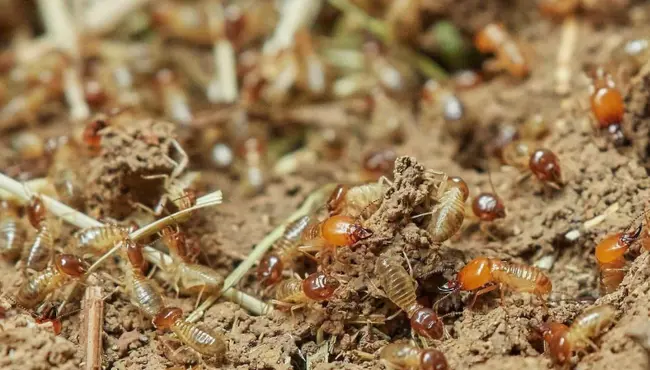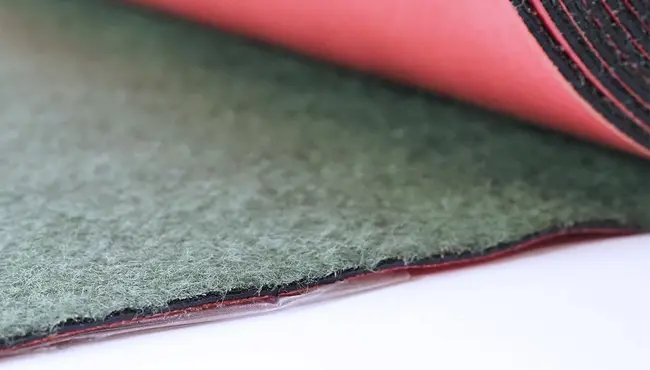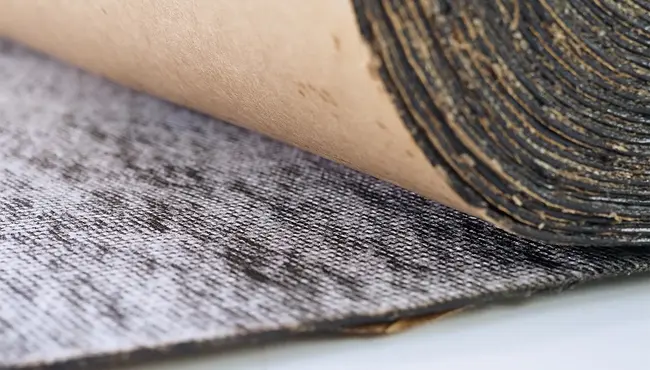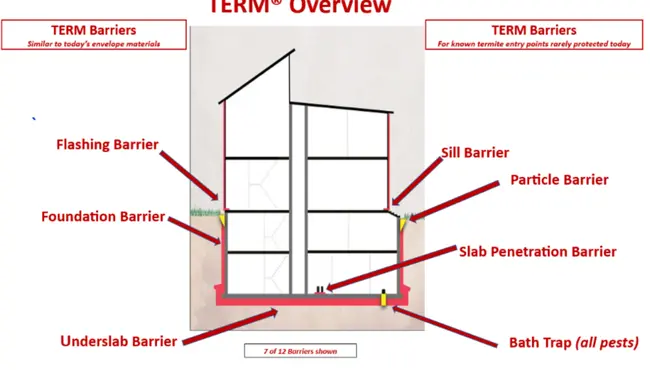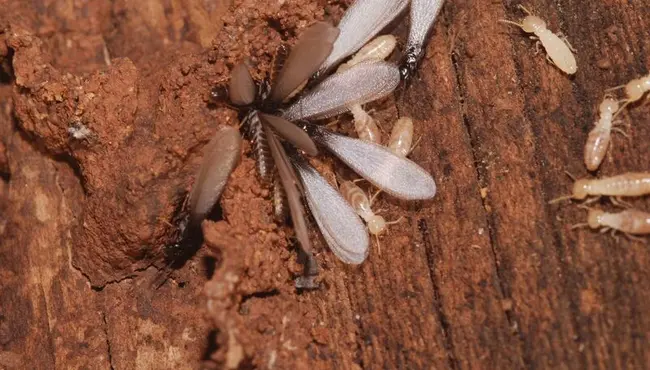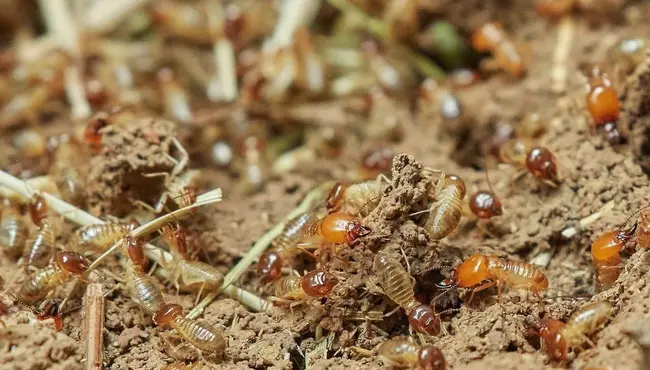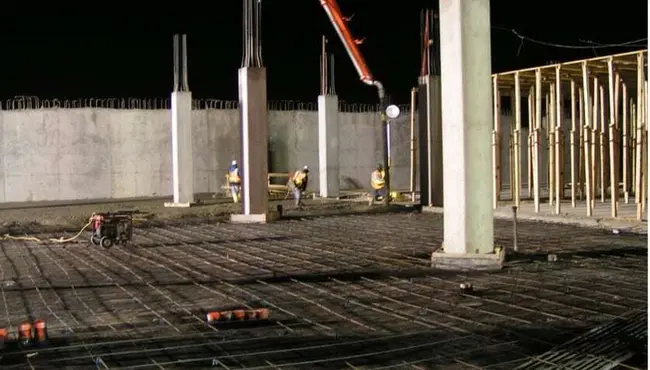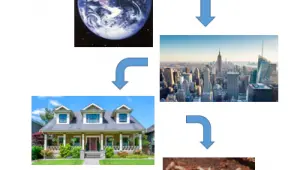Polyguard's TRM waterproofing with non-chemical termite barriers provides a superior solution to a complete termite barrier system around the house. Working together since 1999, Polyguard and entomology scientists developed TRM Barriers: a non-pesticide, waterproofing/termite physical barrier.
TRM Barriers prevent Subterranean, Formosan, Drywood, and Dampwood termites from entering a house through several common entry points:
- Gaps created through the expansion and expansion of the concrete slab’s joints
- Cracks in the concrete slabs
- Gaps that occur around the slab penetrations during construction and by the expansion and
- contraction of metal pipe
- Gaps caused by the corrosion preventing plastic sleeves used around penetrations
- Opening the bath traps and mop sinks to drain overflow water creates termite entry points
- Foundation cracks and joints
- Gaps at isolation joints
- Seams and joints at the edges of sheathing material
- Termite mud tunnels at exposed concrete perimeters
- Windows, soffits, and roof fascia risk attack from swarming Formosan, Drywood, and Dampwood termites
Termites can significantly damage your house’s integrity and value. Protecting your real estate investment requires the application of quality termite prevention methods and prompt remediation if you discover termites.
Termite Damage
Termites cause nearly $40 billion in damage globally and destroy parts of more than 600,000 houses in the U.S., which is why termite prevention and control is critical.
Termites will warp and weaken the house and structural frame. They can also damage the inside of a home by eating anything that contains cellulose: books, cardboard, clothing, etc. Additionally, termites will attack outbuildings, wood fences, firewood piles, and any outdoor wood.
Signs of Termite Infestation
Termites often damage a house long before the owners realize they have a full-blown infestation. Signs that you have termite issues include:
- House settling, that causes the floor to sink
- Doors and windows not closing and opening properly
- Bubbling behind paint and wallpaper
- Water-like damage on the ceiling
- Honeycomb-like denting (caused by tunneling termites) on the hardwood baseboard’s surface, door and window frames
Types of Termites
Nearly 2,800 species of termites live on the planet, but only a few cause us problems: Subterranean, Formosan, Drywood, and Dampwood termites.
Subterranean Termites
Subterranean termites represent 95 percent of the termite damage in North America. A colony of subterranean termites can include one million members, and eat up to 15 pounds of wood weekly, destroying house foundations, support beams, plastic pipes, insulation, and more.
Specific signs you have subterranean termites include:
- The smell of mildew or mold
- The presence of mazes within the walls
- Mud tubes or tunnels (made from termite saliva, wood, and soil) near the foundation
Formosan Termites
A single colony of Formosan subterranean termites contains several million termites, which makes them ten times as destructive as American native termites that live in colonies of several hundred thousand.
Formosan subterranean termites infest wood and other cellulose-based goods. They enter structures where the wood touches the soil, by traveling through mud tubes from the wood to the ground, commonly entering through openings created by unsealed cracks and joints. Swarms may also infest roofs and other above-ground spaces.
Formosan termites thrive in warm and wet climates, like that found in the southeast U.S., but the risk is rapidly spreading into other areas of the country.
Signs of Formosan Termites Include:
- Swarmers near doors, lights, and vents
- Hollow sounding wood
- A grain pattern in the wood, caused by feeding termites
TRM Termite Barriers for House Construction
Polyguard Products specializes in sustainable pesticide-less pest barriers. TRM offers Termites, Energy, and Moisture prevention in a single building envelope solution. The sustainable system significantly reduces the need for pesticides during the house’s lifetime.
Polyguard offers TRM Barriers for protecting specific parts of a house:
Underslab TRM

The Underslab TRM is the base component of the TRM Barrier System for blocking termites and water at the slab joints and cracks. It also elongates to accommodate joint and crack movement and can self-heal small punctures.
TRM Sealant

TRM Sealant applies with a smoothing tool or a caulking gun. It protects against termites and water at the TERM® membrane barriers overlaps, gaps, and penetrations. Metal and chemical-free, Term Termite Sealant can prevent termite entry by:
- Sealing the corrosion preventing plastic sleeves on metal pipes
- Sealing slab gaps, penetrations, and seams
- As a part of the TRM Bath Trap to prevent termites, fire ants, rodents, moles, etc. from getting under bathtubs at ground level
- Detailing small tears and gaps found during inspection or construction on vertical or horizontal portions of the TRM building envelope pest barrier system
TRM Bath Trap Barrier

Polyguard’s TRM Bath Trap combines a stainless-steel screen with 0.02-inch apertures, that is sealed with TRM Sealant. It blocks termites, fire ants, rats, mice, snakes, and moles from entering through bath traps in a concrete slab. Contractors install the non-chemical barrier after pouring the concrete slab and finishing the rough plumbing.
650 TRM

For over 2 decades, contractors have applied peel-and-stick, pliable 650 TRM to concrete or insulated concrete foundation walls to seal foundation joints and cracks to prevent water and termite intrusion. In addition, puncture-resistant 650 TRM minimize construction damage. It is also the only physical termite barrier with over 2 decades of testing and an evaluation report by the International Code Council AC380 ESR 3632.
TRM Sill

The TRM Sill is an adhesive sealant that stops termites from accessing wood framing through joints in the floor or concrete cracks - significant access points for subterranean termites. It also blocks moisture from the steel sills, which reduces corrosion and protects borate-treated wood from leaching the mineral.
TRM Flashing

Builders can install TRM Flashing or TRM UV2-40 at the intersection of the horizontal concrete slab and exterior sheathing, a common entry point for termites found on the slab’s outside or foundation wall. TRM Flashing and TRM UV2-40 also stop energy and moisture leaks at the slab and sheathing intersection.
In addition, you can use TRM Flashing or TRM UV2-40 to seal sheathing seams and the gaps around door and window openings, to further protect against termite and water intrusion.
TRM Isolation Joint

TRM Isolation Joint incorporates termite sealant and stainless-steel wire mesh with 0.02-inch apertures to seal isolation joints (cold joints) that happen in the gaps where patios, sidewalks, and driveways connect with the house, spaces where termites and other pests can infiltrate.
TRM Particle Barrier

TRM Particle Barrier protects several points on the structure from termite entry, including the exposed concrete perimeter and bath traps. TRM Particle Barrier consists of sub-angular or angular quartz particulates with mesh sizes (number of mesh openings in one linear inch) between 8 and 16 to form a non‐chemical barrier to Formosan and Eastern subterranean termites.
Why Apply Polyguard TRM Non-Pesticide Physical Termite Barriers?
Polyguard TRM Non-Pesticide Physical Termite Barriers are a superior solution to blocking termites, energy, and moisture infiltration in one building envelope solution. Stopping termites from accessing your house will protect its value and save thousands of dollars and hours of repair.
Don’t hesitate to contact the Polyguard® professionals today for more on how to install a termite barrier around a house.
